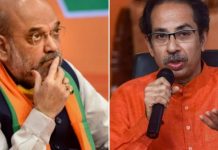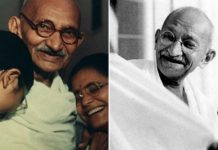
The most striking feature of the first 75 years of Indian independence has, in fact, been an absence – that of the Father of the Nation, Mahatma Gandhi. This Gandhi Jayanti, Politician Shashi Tharoor reflects on the Mahatma, the universal appeal of his principles, and the lack of it in today’s world.
In his immortal ‘Tryst with Destiny’ speech to the nation on the midnight of 15 August 1947, Jawaharlal Nehru had spoken of the Mahatma as “embodying the old spirit of India” whose message would be remembered by “succeeding generations.”
Just five months later, on 30 January 1948, the torch of this spirit was tragically snuffed out by a Hindu fanatic, in the capital of the new state – he had done more for than anyone else – to establish.

Of Ahimsa and Satya
The Mahatma was the extraordinary leader of the world’s first successful non-violent movement for independence from colonial rule.
At the same time, he was a philosopher who was constantly seeking to live out his own ideas, whether they applied to individual self-improvement or social change: his autobiography was typically subtitled ‘The Story of My Experiments with Truth’.
No dictionary imbues “truth” with the depth of meaning Gandhi gave it. His truth emerged from his convictions: it meant not only what was accurate, but what was just and therefore, right. The truth could not be obtained by untruthful or unjust means, which included inflicting violence upon one’s opponent.
To describe his method, Gandhi coined the expression satyagraha – literally “holding on to truth” or, as he variously described it, truth-force, love-force or soul-force. He disliked the English term ‘passive resistance’ because satyagraha required activism, not passivity. If you believed in truth and cared enough to obtain it, Gandhi felt, you could not afford to be passive: you had to be prepared actively to suffer.
Why Gandhi’s Non-Violence Worked

This was the approach Gandhi brought to the movement for India’s independence –and it worked.
Where sporadic terrorism and moderate constitutionalism had both proved ineffective, Gandhi took the issue of freedom to the masses as one of simple right and wrong, and gave them a technique to which the British had no response.
By abstaining from violence, Gandhi wrested the moral advantage. By breaking the law non-violently, he exposed the injustice of law. By accepting the punishments imposed on him, he confronted his captors with their own brutalization. By voluntarily imposing suffering upon himself in his hunger-strikes, he demonstrated the lengths to which he was prepared to go in defence of what he considered to be right. In the end, he made the perpetuation of British rule an impossibility.
Gandhi’s Idea of Truth
The sad truth today is that the staying-power of organised violence is almost always greater than that of non-violence. Some twenty million lives have been lost in wars and insurrections since Gandhi’s passing. In a dismaying number of countries including his own, governments spend more for military purposes than for education and health care combined.
The current stockpile of nuclear weapons represents over a million times the explosive power of the atom bomb, whose destruction of Hiroshima so grieved Gandhi.
As the Mumbai terror attacks of 26/11 demonstrated, India faces the threat of cross-border terrorism to which the Mahatma’s only answer – a fast in protest – would have left its perpetrators unmoved.
Gandhism without moral authority is like Marxism without a proletariat. Yet, few who have tried his methods worldwide have his personal integrity or moral stature. The coercive hartal, the hypocritical “relay fast”, the theatrical misuse of dharnas, only show how far the world has fallen from Gandhi’s ideas of truth.
Source: The Quint

































